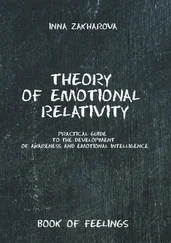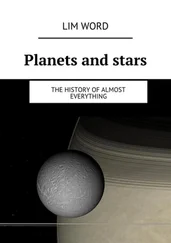A fairly long (60 million years) Carboniferous period, or carbon begins 359 million years ago, it is characterized, as the name implies, by intense coal formation. The gymnosperms are developing and thriving: coniferous, cordaite (trees resembling these very conifers), and cicadassia (a cross between palm and fern), mussels and horsetails. In warm bogs amphibians prosper (stegocephalus, they are labyrinthodontes resembling crocodile-newt), ripidity (even larger, 8-meter crocodile), in the seas – sharks reaching 13 meters in length. In the air hover mega-moves – dragonflies with a wingspan of up to 65 cm. This air itself is characterized by an elevated – up to 35%, oxygen content (now 21%).
In the Perm period (Perm, the name of the Russian city in the vicinity of which this stage is allocated) the continents unite again, somewhat differently, forming a single Pangea – washed by the unified world ocean of the Pantalassa. Later, in the Jurassic period of the next era, it will split into six continents known to us. This geological process is characterized by a decrease in the area of inland water bodies, the onset of deserts. Sandy barkhans cover almost the entire territory of present-day Siberia. Carboniferous deposits (coal) overlap with Triassic (motley sandstone, shell limestone).
The successes of the speciation of Perm are rather modest – several new species of insects. The period ends with the largest in the history of the Earth, the Permian-Triassic extinction (English The Great Dying), 252 million years ago. In less than 60 thousand years, 96% of marine species, 70% of terrestrial vertebrates and 83% of the whole class of insects perish. The main hypotheses of the causes of the event: 1 – the fall of an asteroid a few tens of kilometers in diameter. The crater near Wilkes land (Antarctica, a site with a 300 km ring anomaly opposite Australia) seems to confirm this version. 2 – the release of greenhouse gas from, until the rest at the bottom, at the earth’s poles, frozen methane hydrates. In this case, the world ocean boils, permeated with bubbles, like champagne, freed from cork, giving out about 4 trillion tons of methane to the atmosphere in less than a period of ordinary human life. The weather is going crazy, sharp (more than 6Сº per year) warming is replaced by cold snaps, and this is completely out of the question for all the inhabitants of the planet. 3 – anoxia (suffocation). The waters of the oceans, seas, lakes come into contact with hydrogen sulfide (H2S), hydrogen chloride (HCl), volcanos suddenly released into the atmosphere (including so-called Siberian traps, flooding huge areas of hot lava), acidify, lose oxygen. The remains of animals also give off the notorious H2S, which aggravates the tragedy that is taking place.
Be that as it may, cute trilobites, and with them Paleozoic himself, come to an end.
The restoration of the biosphere takes five million years. The Triassic, the first period of the Mesozoic Era, opens.
Among the surviving (diapsidic) reptiles are archosaurs (“initial lizards”, classified by some features of the skull, nasal septum, jaws) – which become the ancestors of modern birds and crocodiles, as well as the entire family of now extinct dinosaurs. Belemnites appear, a distant analogy of squid, ammonites, with shells twisted into a spiral, gastropods (gastropods), ie, snails, and also well-known to us bivalve mollusks – oysters.
Of the shellfish with ganoid scales (rhombic plates with hook-shaped protrusions, which are connected by them in the likeness of an external skeleton), the bony ones, in fact, the same ray-fish, stand out.
Formed a classic turtle. Synapsides, they are the theromorphs, they are the same animal-like, namely, their suborder cynodonts of the group of theriodontes (zverozuby lizards), become the ancestors of mammals. This lizard has four unusually long paws (legs), laying eggs (like some modern mammals), most likely has a wool, judging by the structure of the nasal septum, warms the inhaled air, and the cold-blooded reptile in general, is now not.
Trias lasts almost 50 million years, and ends 200 million years ago, another global catastrophe, the so-called. Triassic-Jurassic extinction of species. Causes may be the same as that which marked the arrival of a new era. The result – the extinction of half of the species, the release of many ecological niches – which without delay occupy dinosaurs.
Dinosaurs, that is, “terrible lizards” differ from ordinary reptiles for that time only by their gigantic size. There is no fundamental difference. But, as you know, size – often it matters. The largest representative of this order, a group of herbivorous sauropods (four-legged) – seismosaurus, reaches a length of 36 meters, in height – as far as could raise the neck – 20 meters, with a weight of 140 tons. Titanosaurus weighs “only” 50 tons, but is more widely represented in fossil remains. Theropods (reindeer, moving on two legs), as a rule – predators. Their champion is tyrannosaurus rex, height to the end of the thigh (trunk) is 4.5 meters, length is 13 meters, weight is 8 tons. A slightly smaller mass can boast of a modern African elephant.
The Jurassic period (Jurassic, according to the name of the mountains in Switzerland) is characterized by limestones, detrital rocks (sharp stones), shales (rocks with layered fusion of minerals), magmatic rocks (basalt – friable gray stone with yellow-green crystalline impregnations, granite,), clays and sands. All this is evidence of the rapid disintegration of Pangea into continental blocks, with the concomitant formation of many shallow warm seas. Tree-like ferns (“vascular plants”) are widely spread, with branches lying in the same plane forming a kind of leaf, and also similar to them – as well as modern palms, slightly less lush 10—18 meter long cycads. Reef communities formed from the Triassic, coral polyps are formed.
Archeopteryx, a dead end of evolution, appears – an “ancient bird”, the size of a crow, rather clumsy, as paleontologists say, planning from tree to tree. Actually, the scientific community has not yet developed a generally accepted theory of bird origin. In any case, it is in the Jurassic, pterosaurs, flying warm-blooded lizards, conquer the air. The most famous representative of this genus (the suborder of pterodactyli), the hero of the film “The Jurassic Park” is Pteranodon, with a wingspan of 7 meters, but also known in North America is the Quetzalcoatl, 12 meters wide – which corresponds to the size of the light bomber of the Second world war. Their weight is up to 200 kg. – contradicts the conclusions of those biophysical scientists who prove the impossibility of a free flight for the beings of such a mass (under terrestrial conditions).
The cretaceous period (chalk), which began 145 million years ago according to a rather arbitrary decision of scientists, is characterized by abundant sedimentary deposits of the writing chalk – formed from the remains of invertebrate marine animals – mainly ammonites, already remembered by us on twisted shells. Extensive areas of land, in particular, Africa and South America, India and Australia diverge from one another further, forming new water spaces, warm shallows and islands. Appear flowering plants, they are angiosperms – with a flower as a reproductive organ and quite complex, the so-called. double fertilization (an embryo sac of several cells and, in fact, an ovum).
This pleases insects, becoming the main pollinators. Their diversity increases many times. In the sky, along with pterodactyls, more like bats, real, that is, flying birds fly.
All this idyll is over 65 million years ago, during the most famous, small-Paleogene great extinction. The main version is the fall of the celestial body, which caused the appearance of the Chicxulub Crater near the Yucatan Peninsula (Mexico). The diameter of the asteroid is 10 kilometers, the depth of the crater is 17—20 km. the width is 180 km. Thus, the impact force is 2 million times higher than the energy released during the testing of the powerful hydrogen bomb AN 602 on Novaya Zemlya in 1962.
Читать дальше












